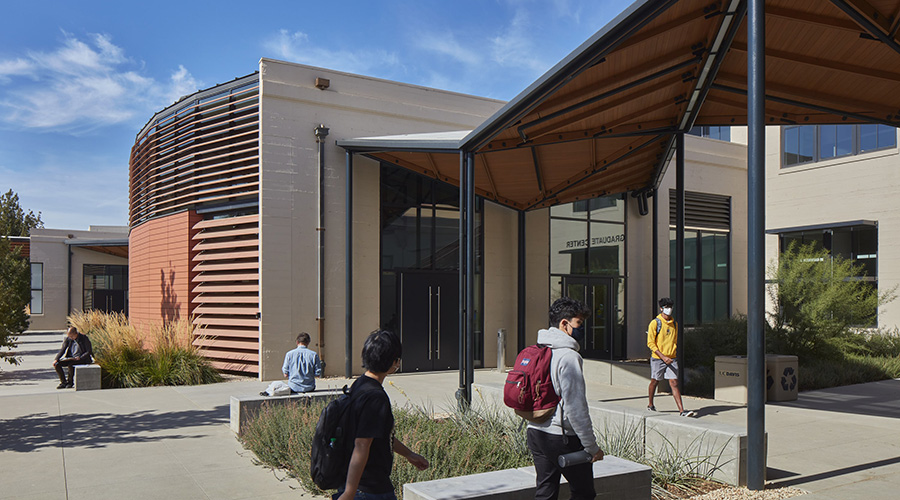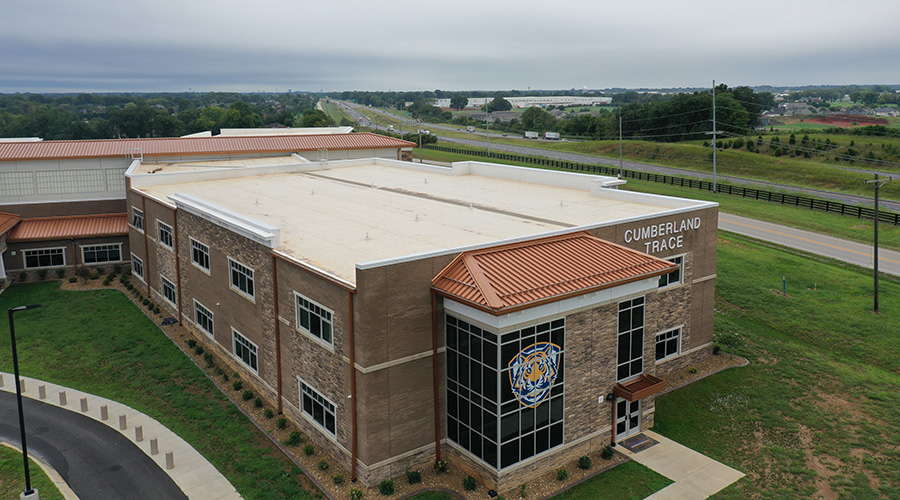Transforming Denver Public Schools: A Path to Carbon Neutrality by 2050
With a climate plan in place, DPS now has a framework to guide the district through the next 25 or so years with goals in place to achieve carbon neutrality by 2050.
The DPS climate plan focuses on three primary areas, or North Star Goals, which are:
- Environmental protection – Reduce overall greenhouse gas emissions by at least 90 percent by 2050.
- Economic prosperity – Reduce natural resources consumption and waste year-over-year.
- Social development – All students and staff are engaged in sustainability by 2050.
Inside those primary goals are six areas the district is focusing on: transportation, the built environment, resource management, wellness, engagement and environmental justice, and careers and curriculum.
Those long-term ambitions include benchmarks along the way. DPS breaks down the plan into smaller, five-year goals to help keep the plan from appearing too overwhelming.
“I would agree North Star Goals feels audacious,” Kittle says. “It feels like, how can we think about 2050? Really, the plan is to just look at the next five years and allow those North Star Goals to sit in the background knowing that we will work towards that.”
Some of the highlighted goals in the district’s current five-year plan include:
- Electrify 80 percent of the heating load for 10 buildings.
- Commission two existing building envelopes and incorporate findings into future financial impact assessments.
- Require sustainable design guidelines to be integrated into all capital improvement decisions.
- Implement one fully smart building, perform a cost-benefit analysis, and create a funding plan for additional smart buildings.
- Reduce energy consumption by 15 percent from 2021 standards.
To accomplish these energy goals, the district is turning to a proven approach in facility management: addressing low-hanging fruit.
“HVAC is a huge piece of the pie,” says Adam West, the district’s energy manager. “Going to lighting for the ROI, even just scheduling HVAC is great. Those are the two low-hanging fruit that DPS has been addressing. We’re expanding controls where we don’t have them for HVAC, and we did district-wide LED retrofits for every space. Then it gets to operating buildings, occupant engagement, and managing plug loads.
Taking the low-hanging fruit approach even further, West says the district is looking to replace end-of-life equipment with electric options. Such systems include furnaces, rooftop units under 25 tons, tank water heaters, air handling units, unit ventilators and instantaneous hot water heaters.
“The quickest wins are the ones with the really short returns on investment,” West says. “If you can find those lighting projects, HVAC scheduling, and then tell that story, you’ll start to build the snowball which will eventually start to accumulate, and you’ll find your first followers and champions as we like to say.”
Going forward
With a climate plan in place, DPS now has a framework to guide the district through the next 25 or so years with goals in place to achieve carbon neutrality by 2050. Still, Kittle is quick to remind facility managers that their journey has only just started.
“If we plant a flag and say we’re done, I should be let go,” she says. “If we can work ourselves out of a job because we did it so well, I would consider that the most successful thing I’ve done in my career."
Challenges and roadblocks are constants for facility managers, as natural disasters, everyday maintenance issues and even pandemics, are just some of the threats that constantly loom.
Addressing climate change is another. As many managers know, not all areas of the country are embracing the threats climate change poses to the country and how buildings operate.
Kittle worked in a facility setting before arriving at DPS and has seen both sides of the coin. Before embarking on a plan to electrify buildings and lower buildings’ carbon footprint, she advises managers to build a team they can believe in.
“Part of what I would tell someone just starting off is to find your tribe, whether it’s inside the organization or outside where you can let it all out, because it’s really tough work,” she says. “You are trying to change a behavior and no matter the size of the organization, that is incredibly difficult because most people want to change on their terms, not the terms that we’re kind of being forced to by climate change.”
Dave Lubach is the executive editor of the facility market. He has more than eight years of experience reporting on facility management and maintenance issues.
Related Topics:













